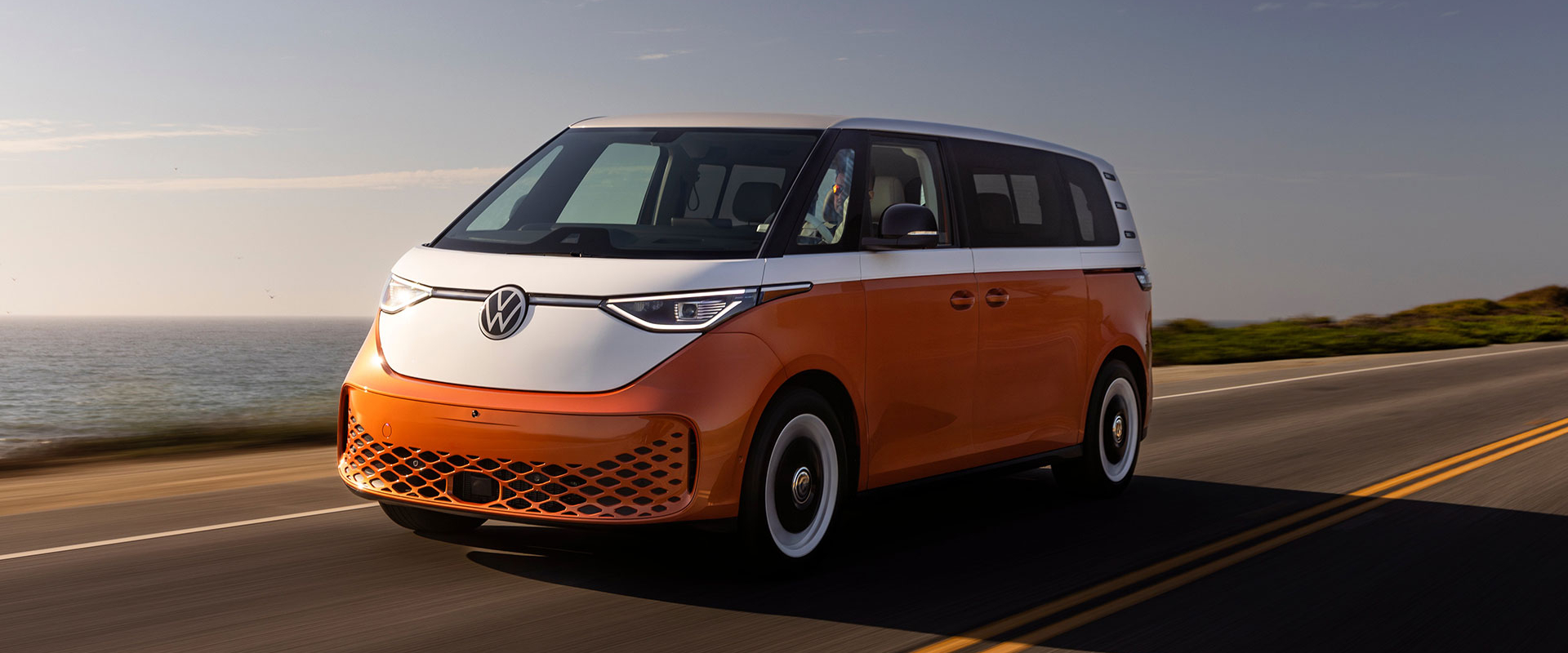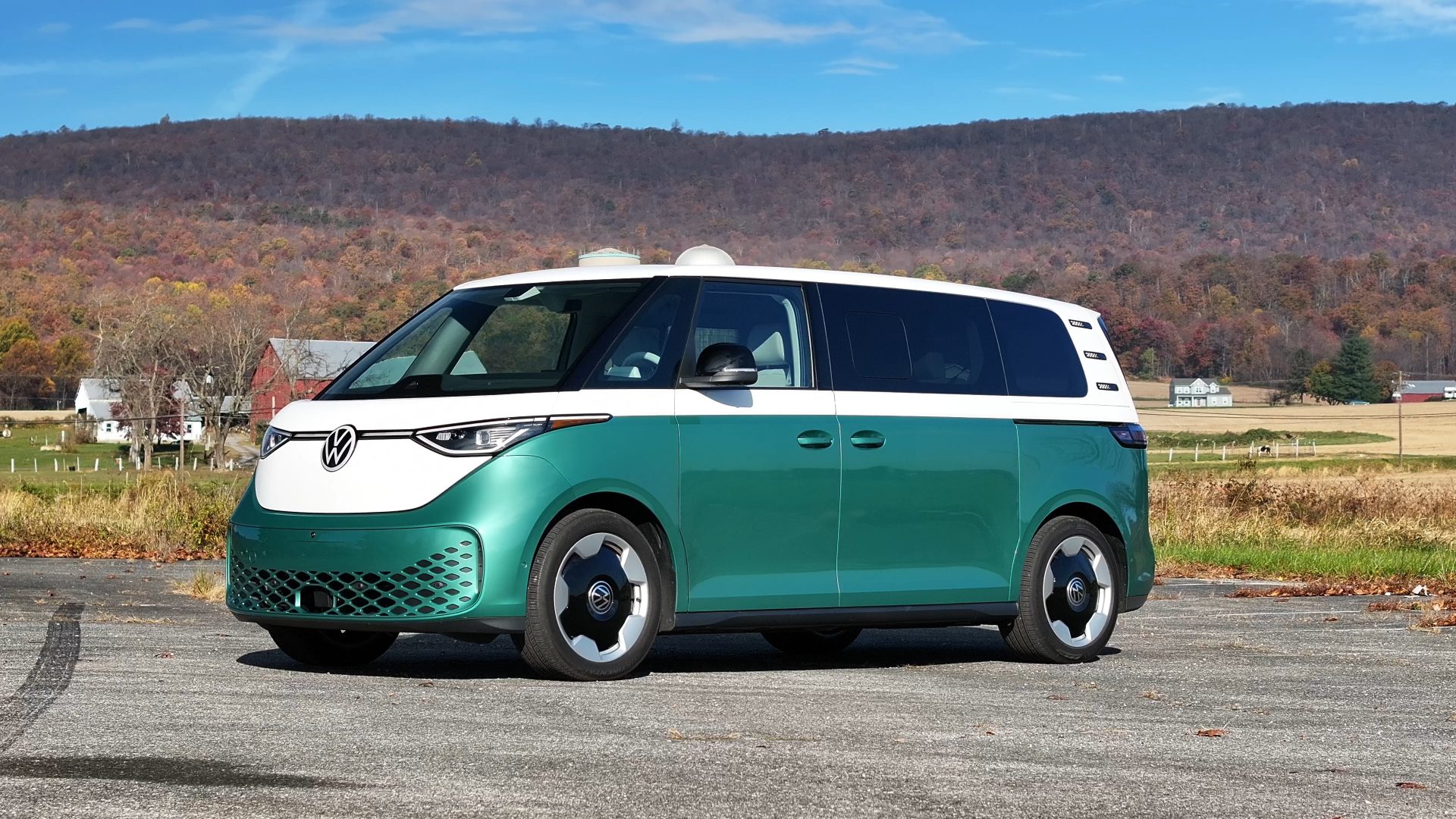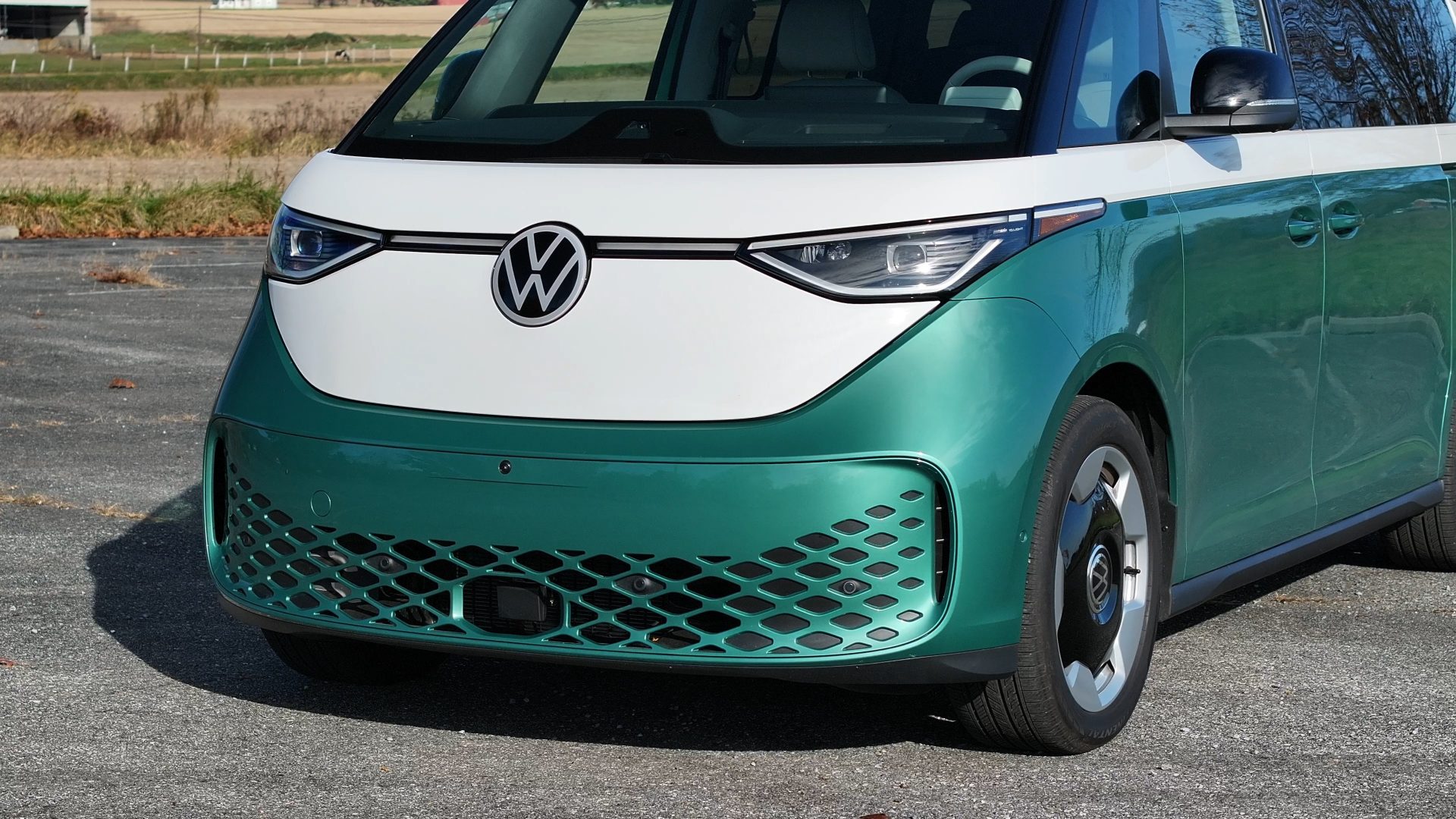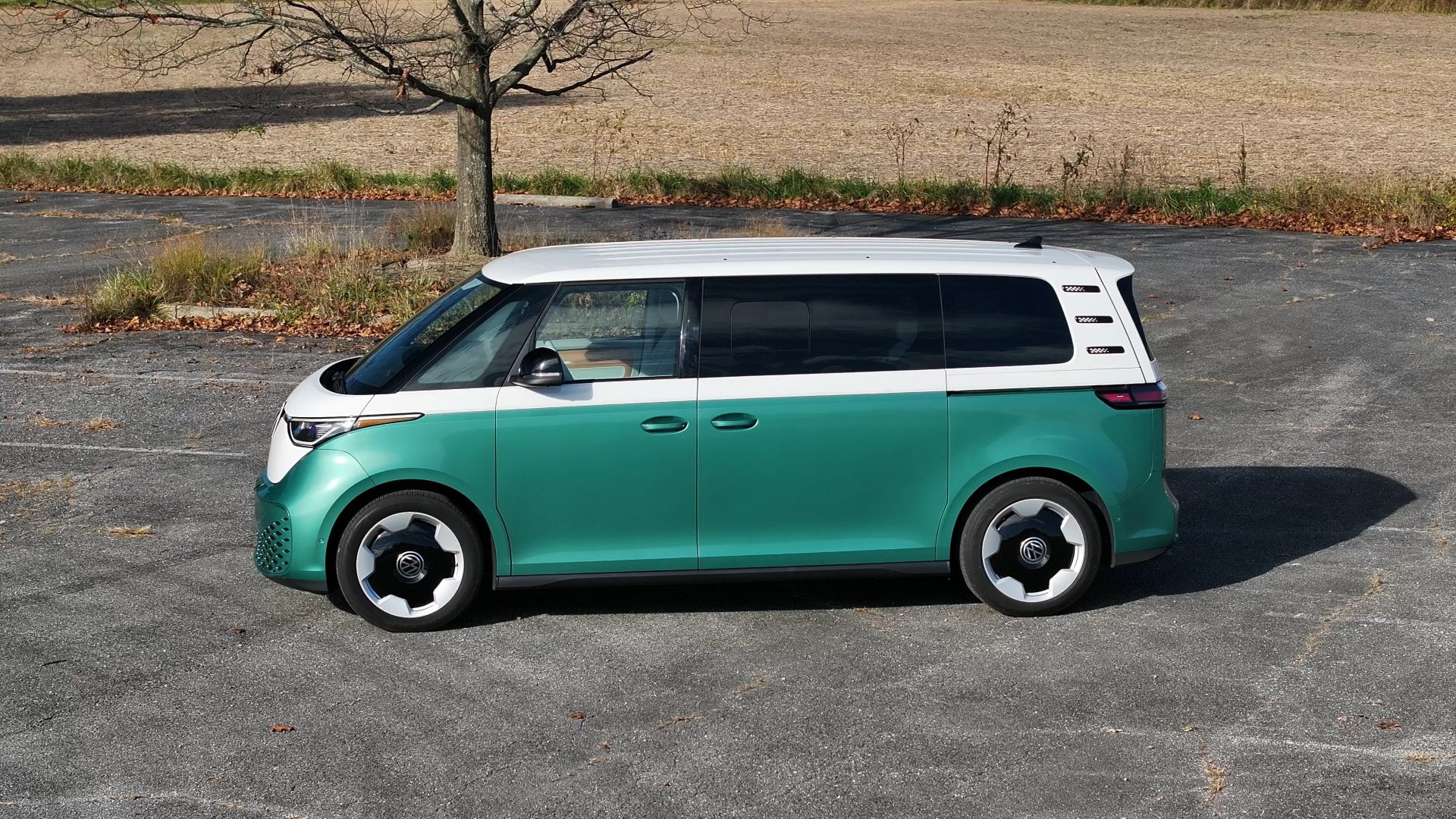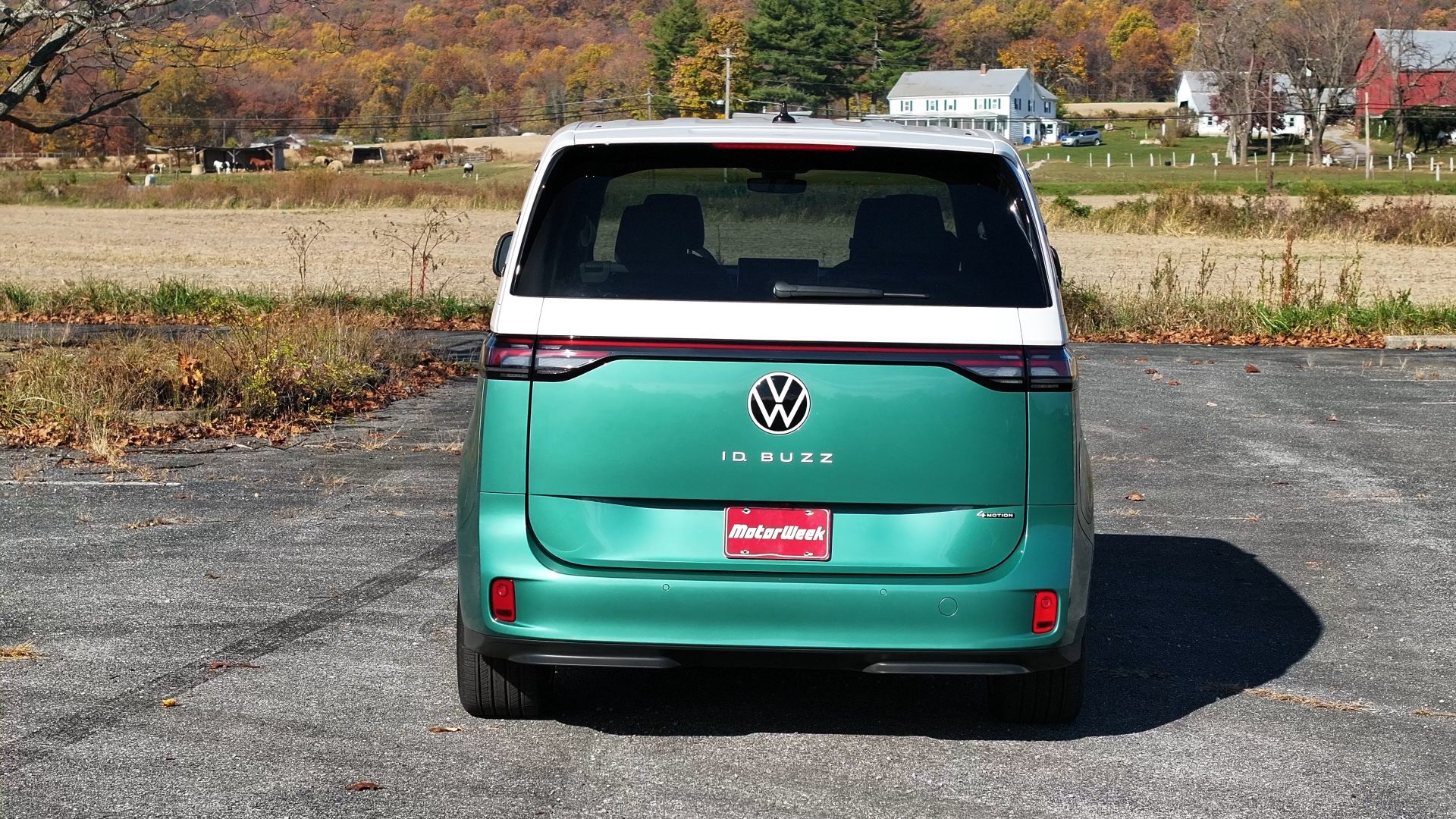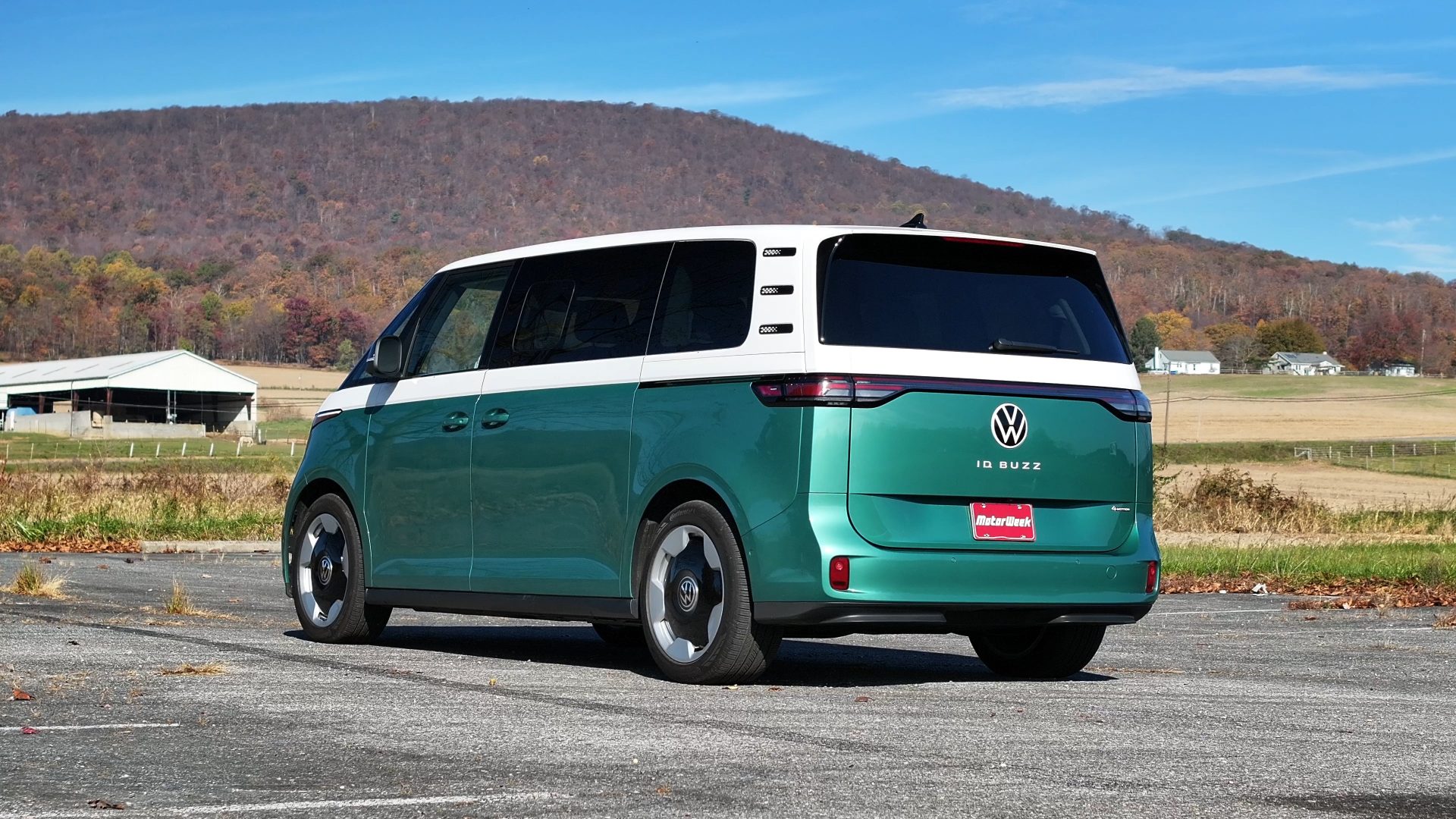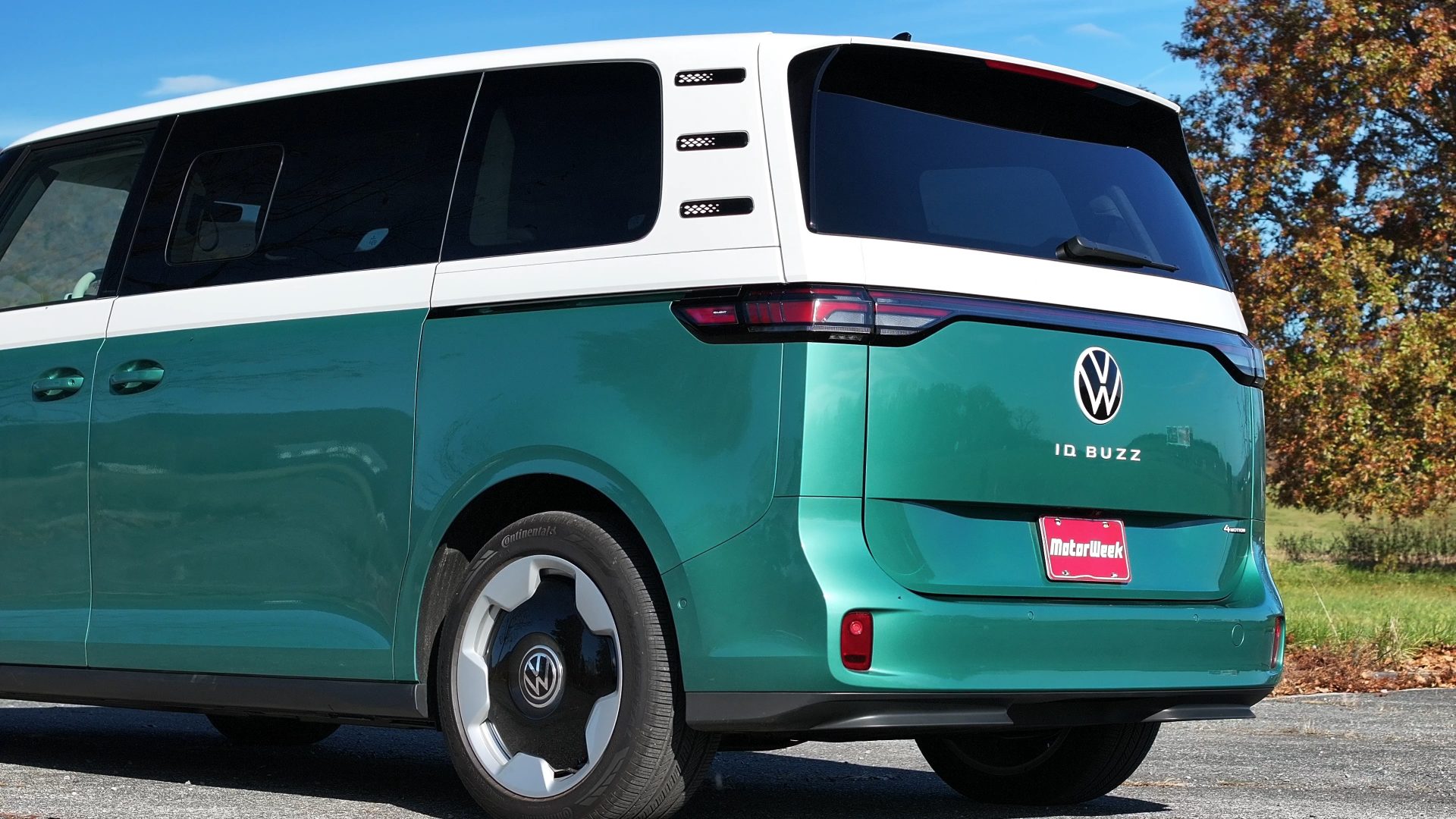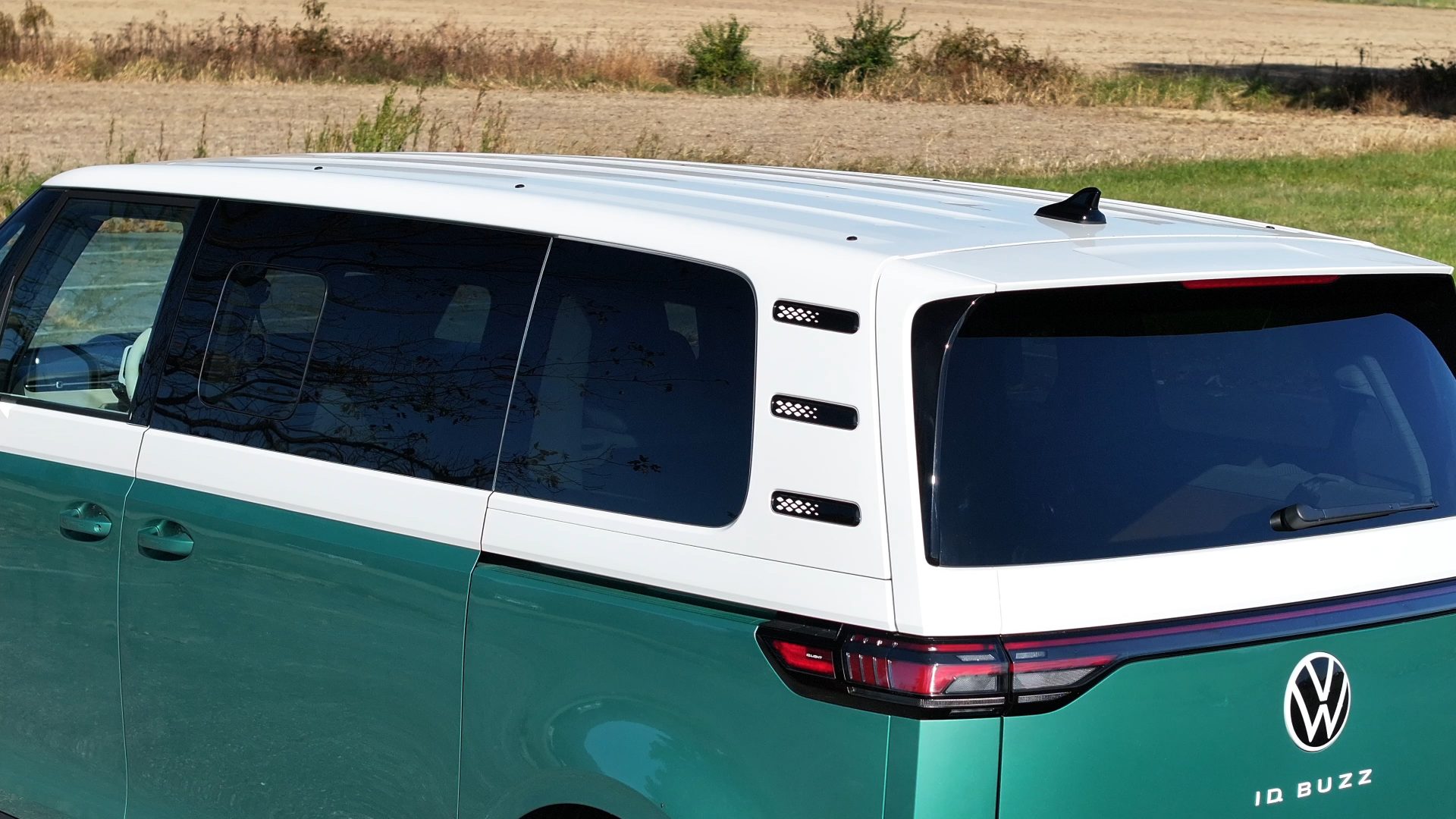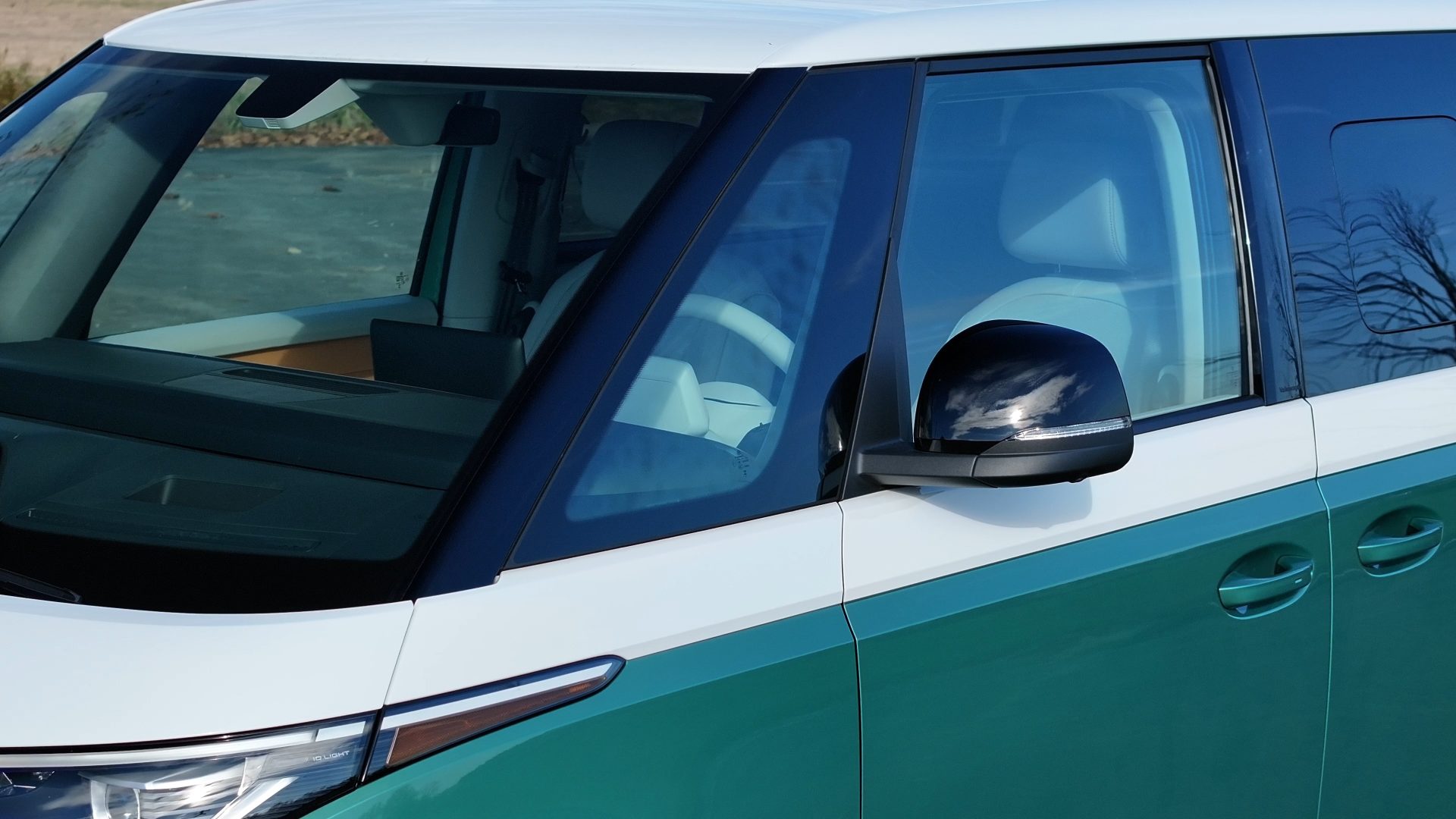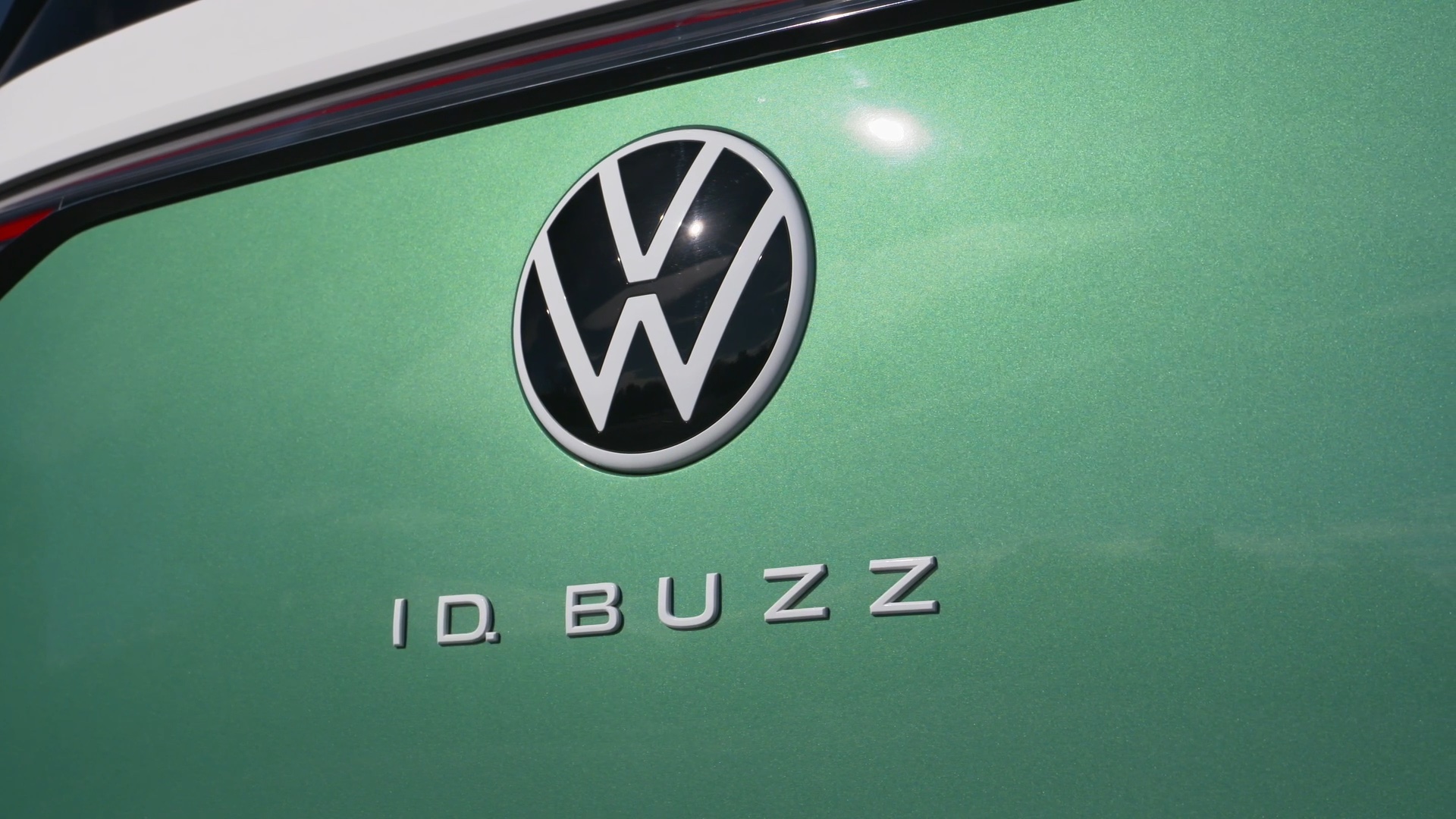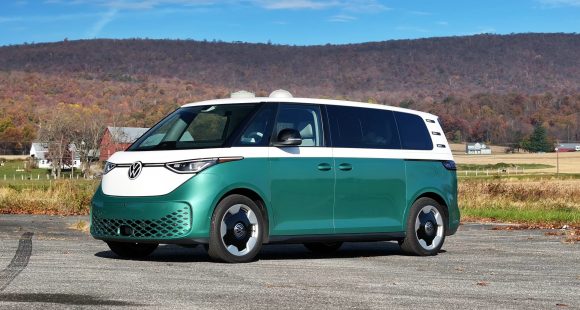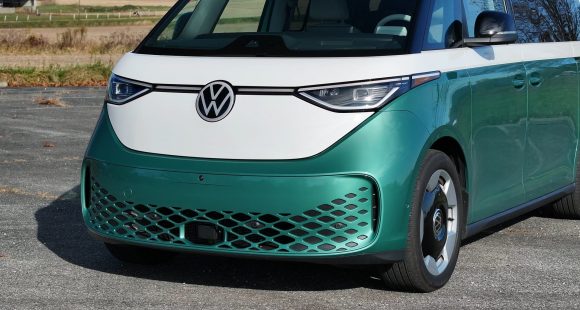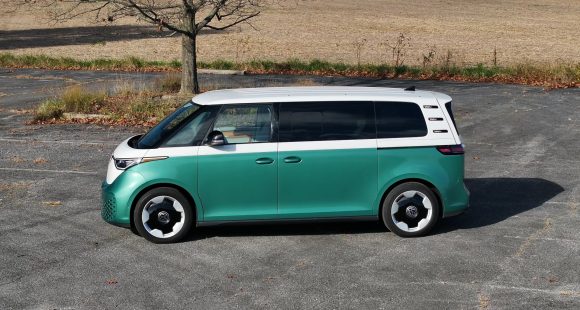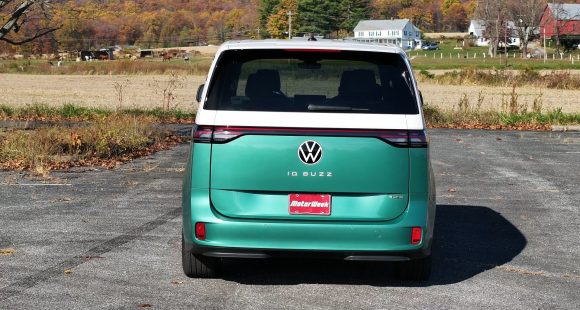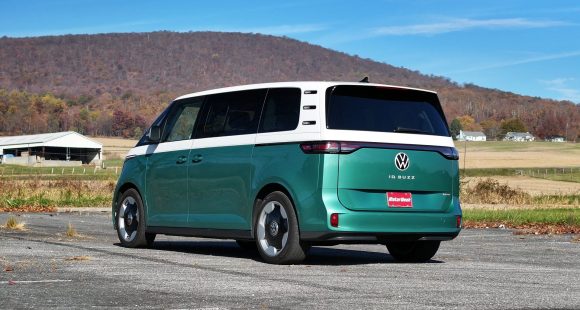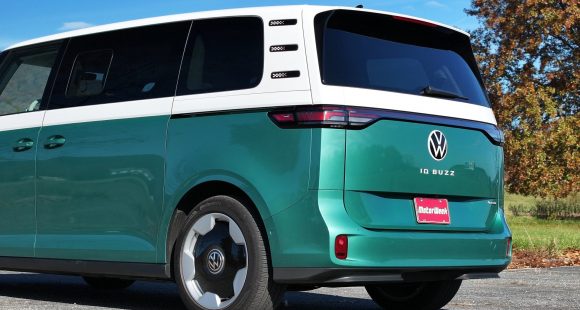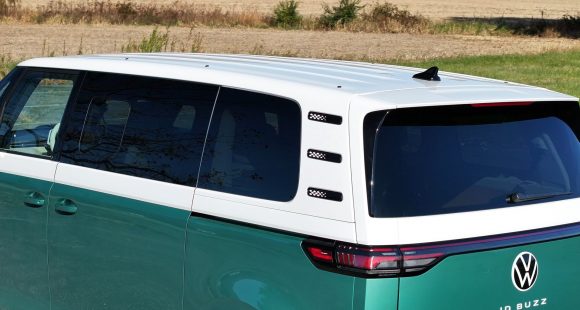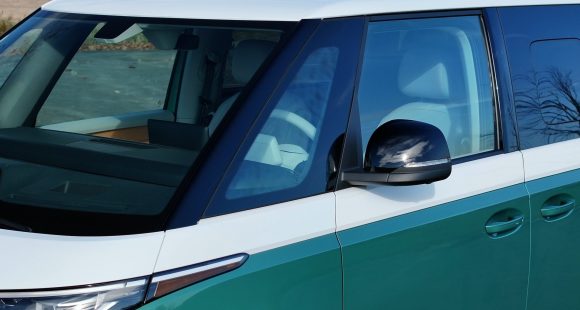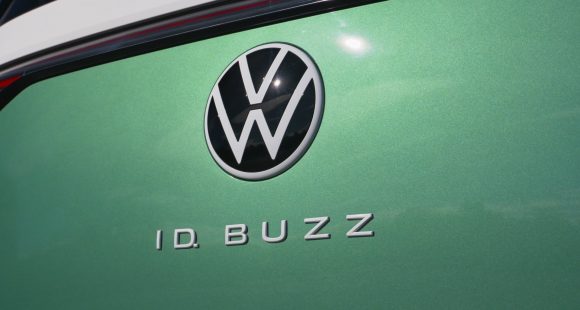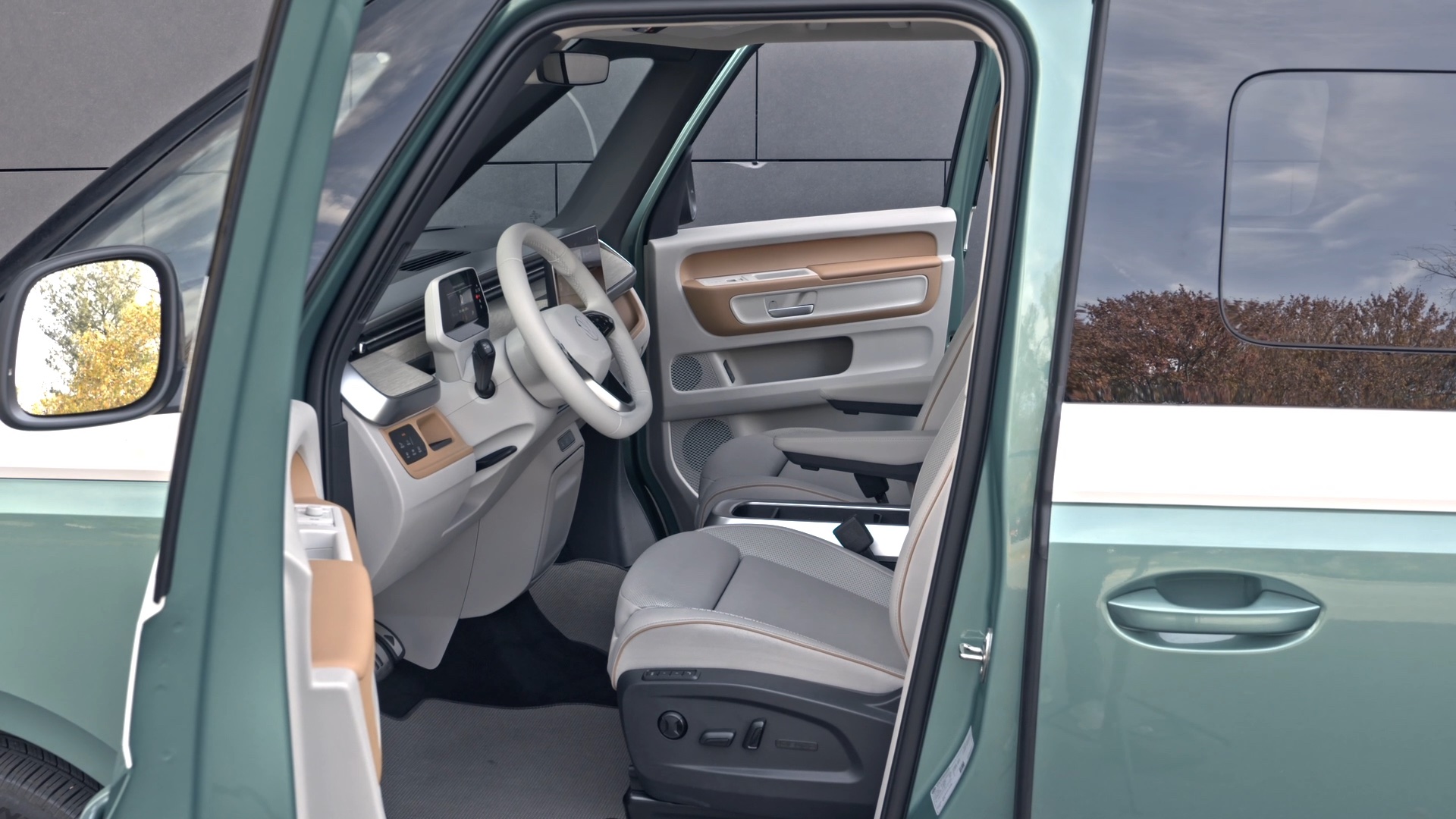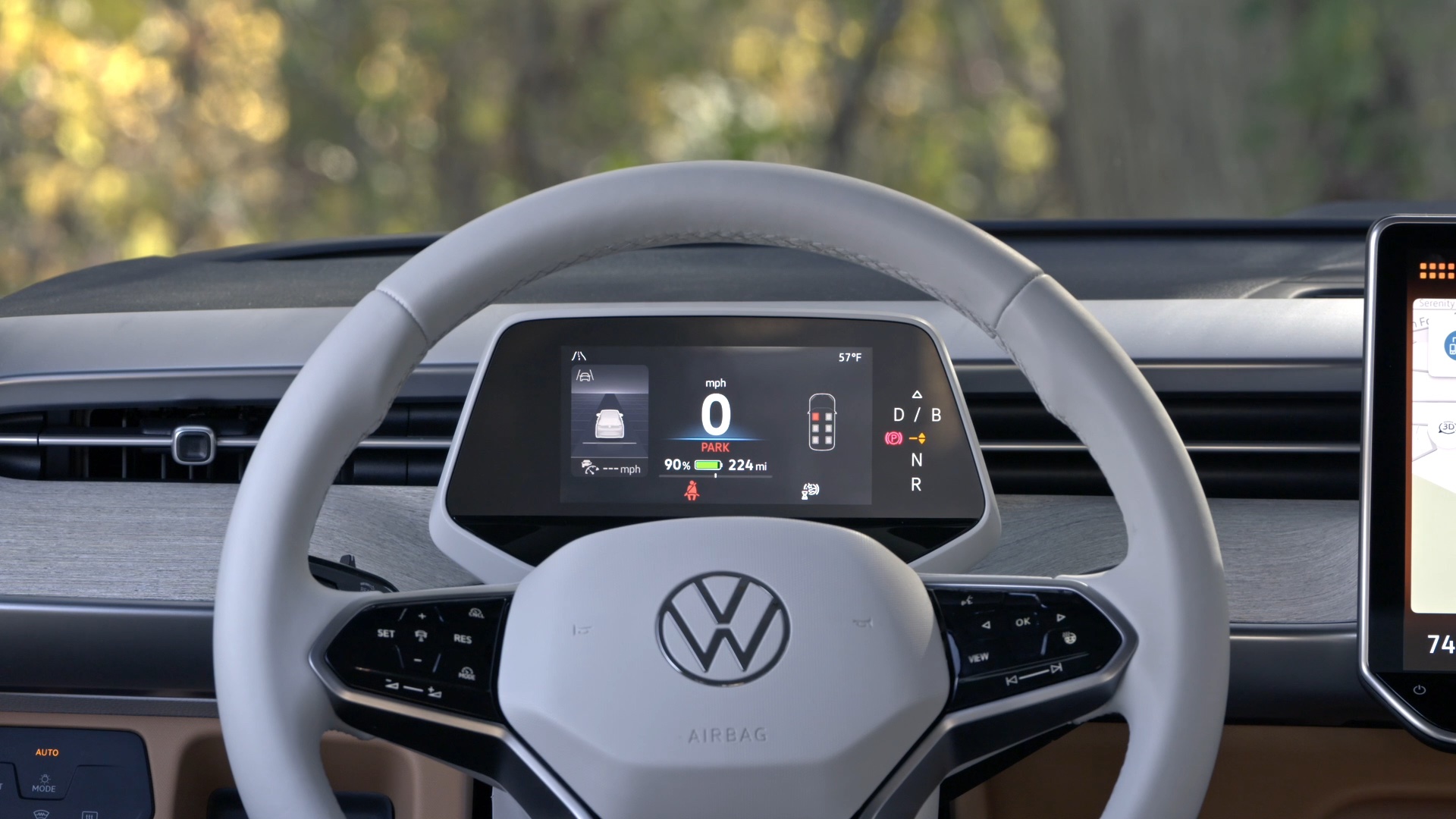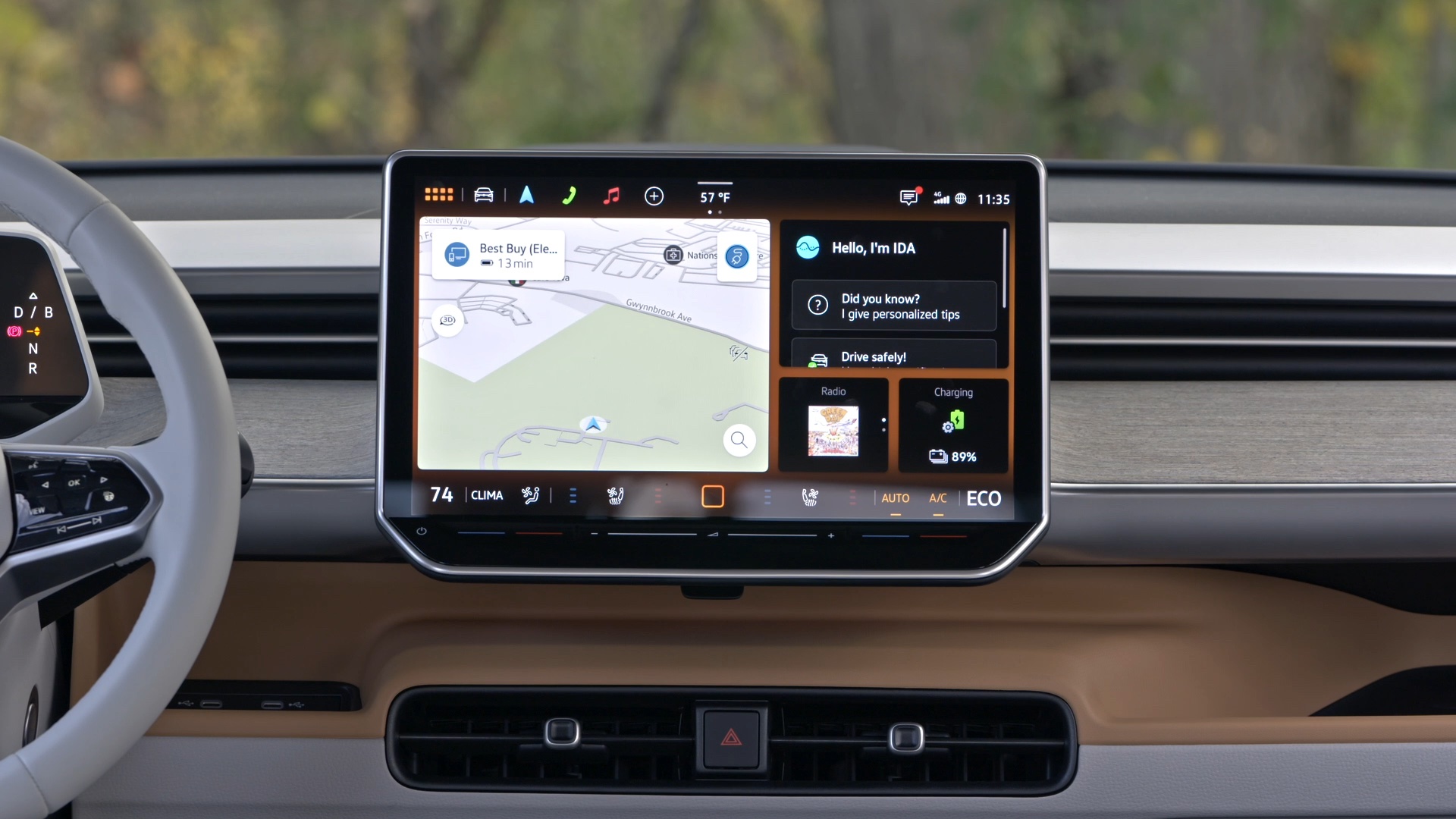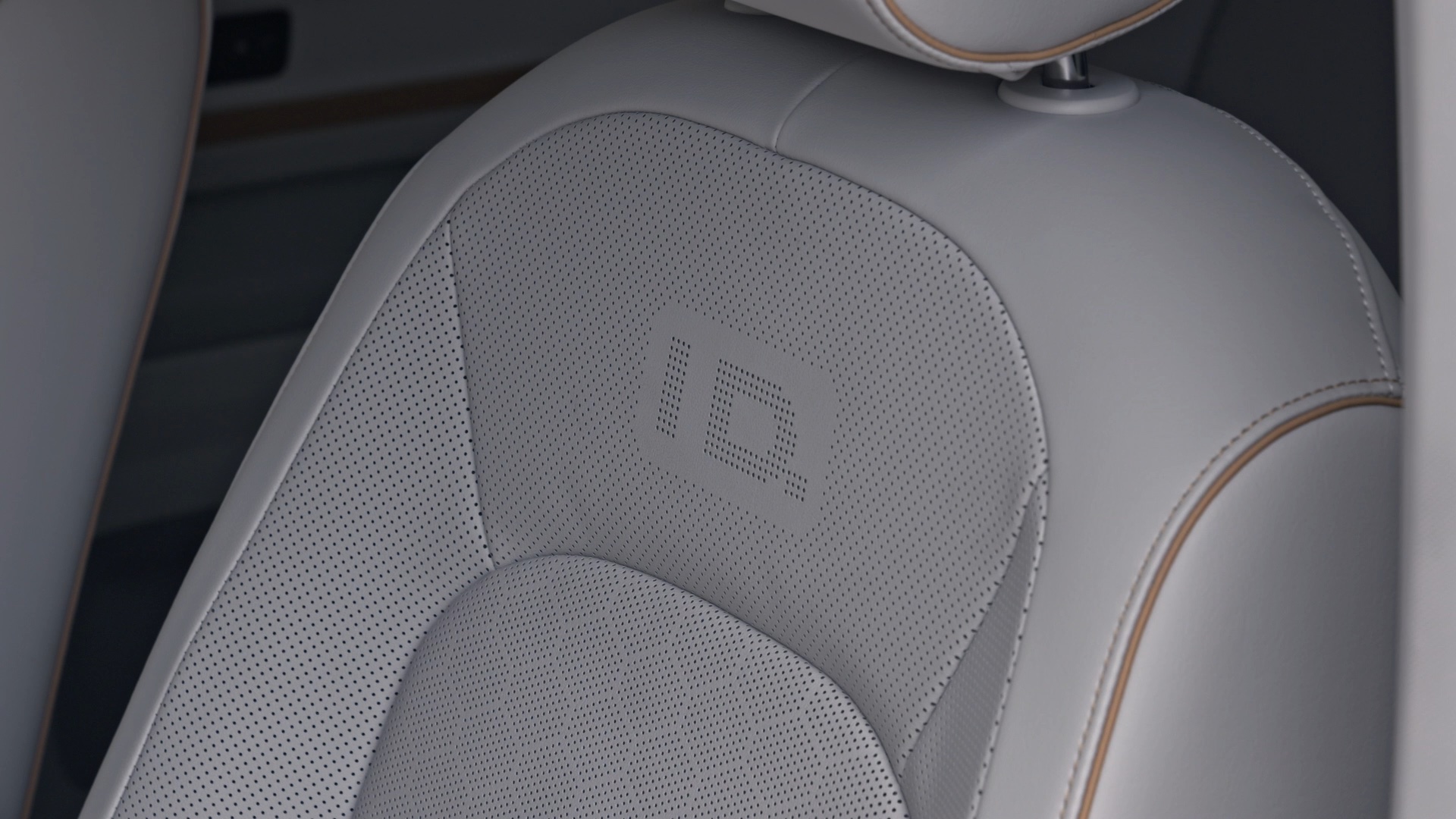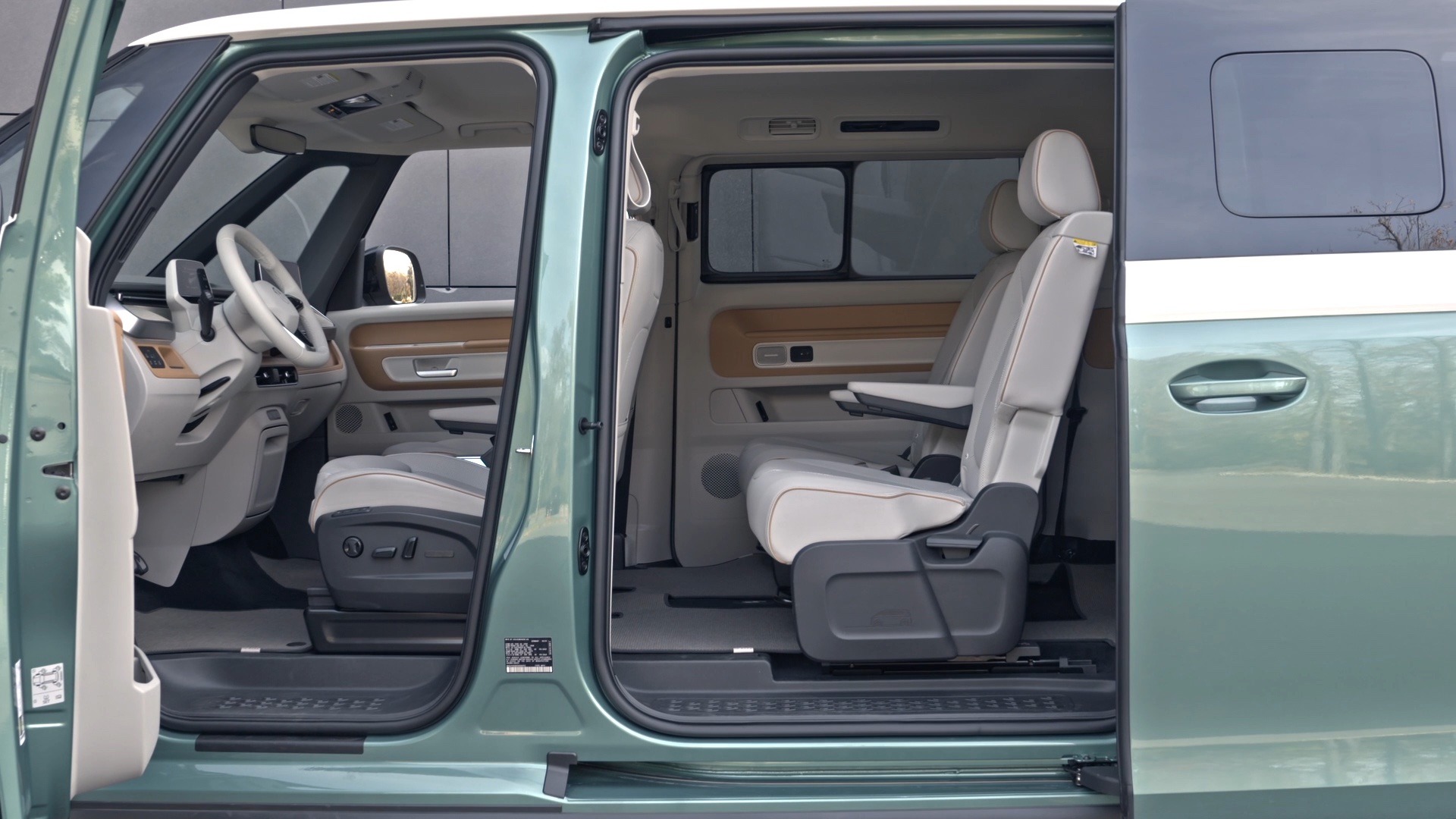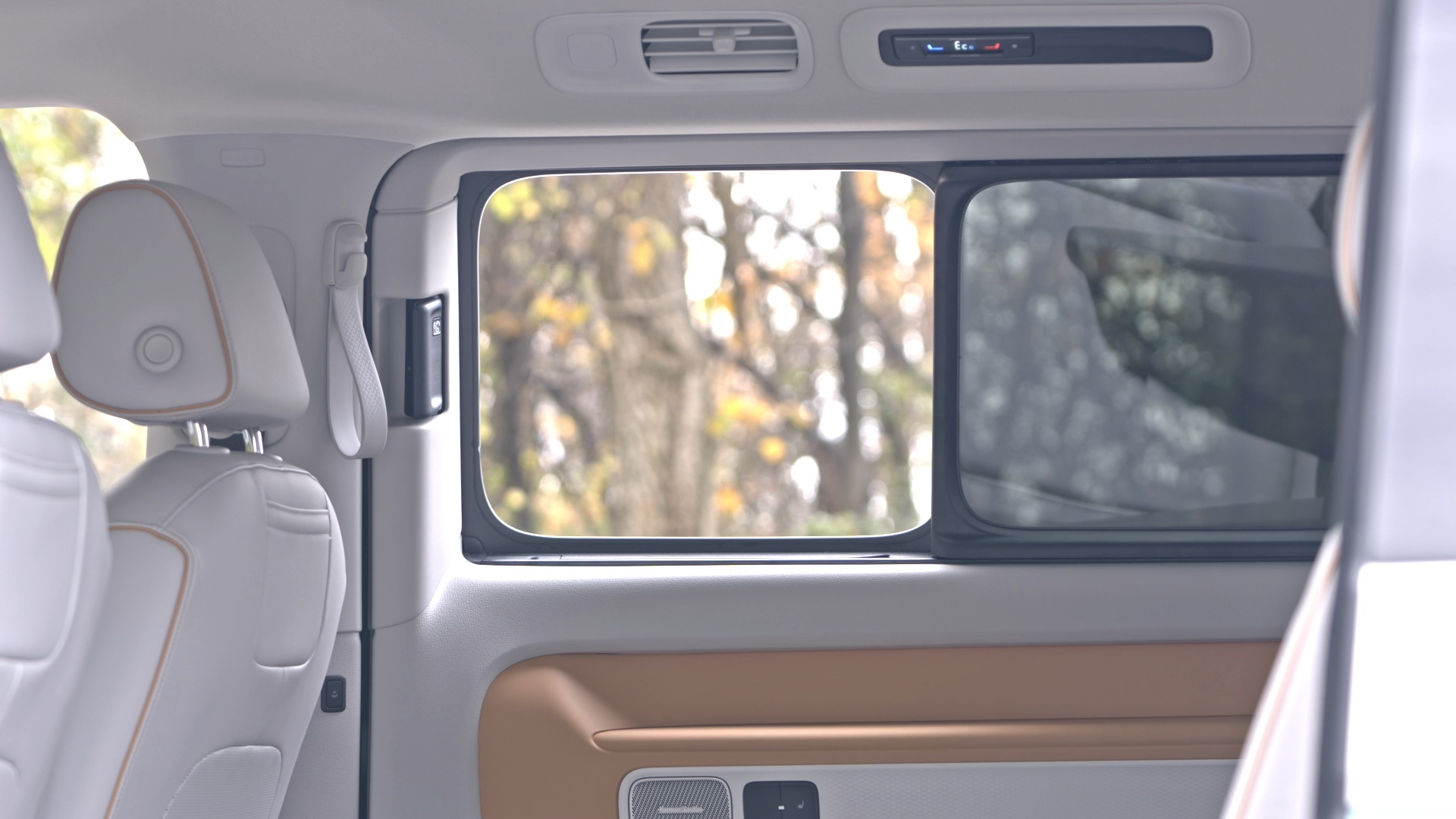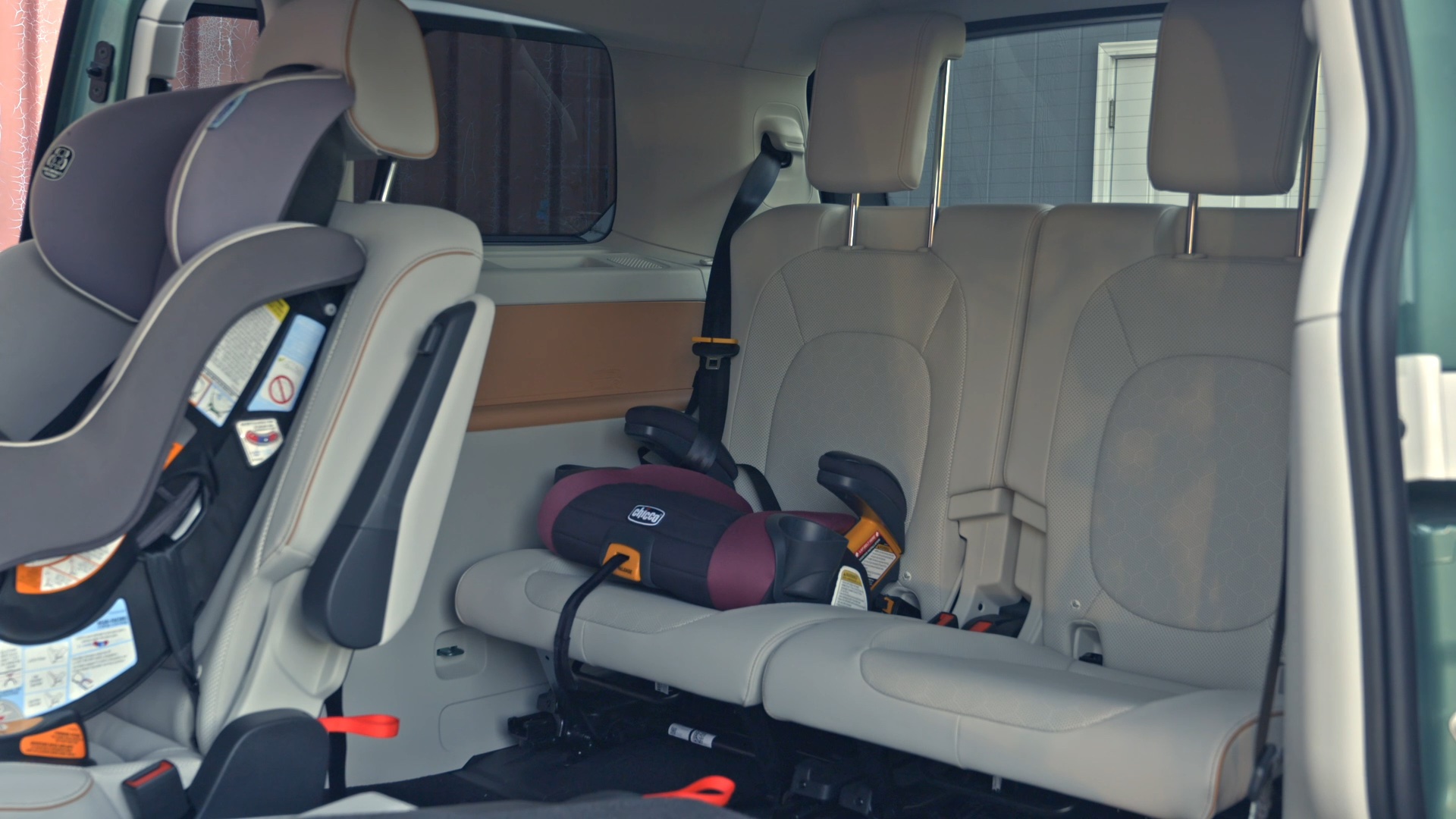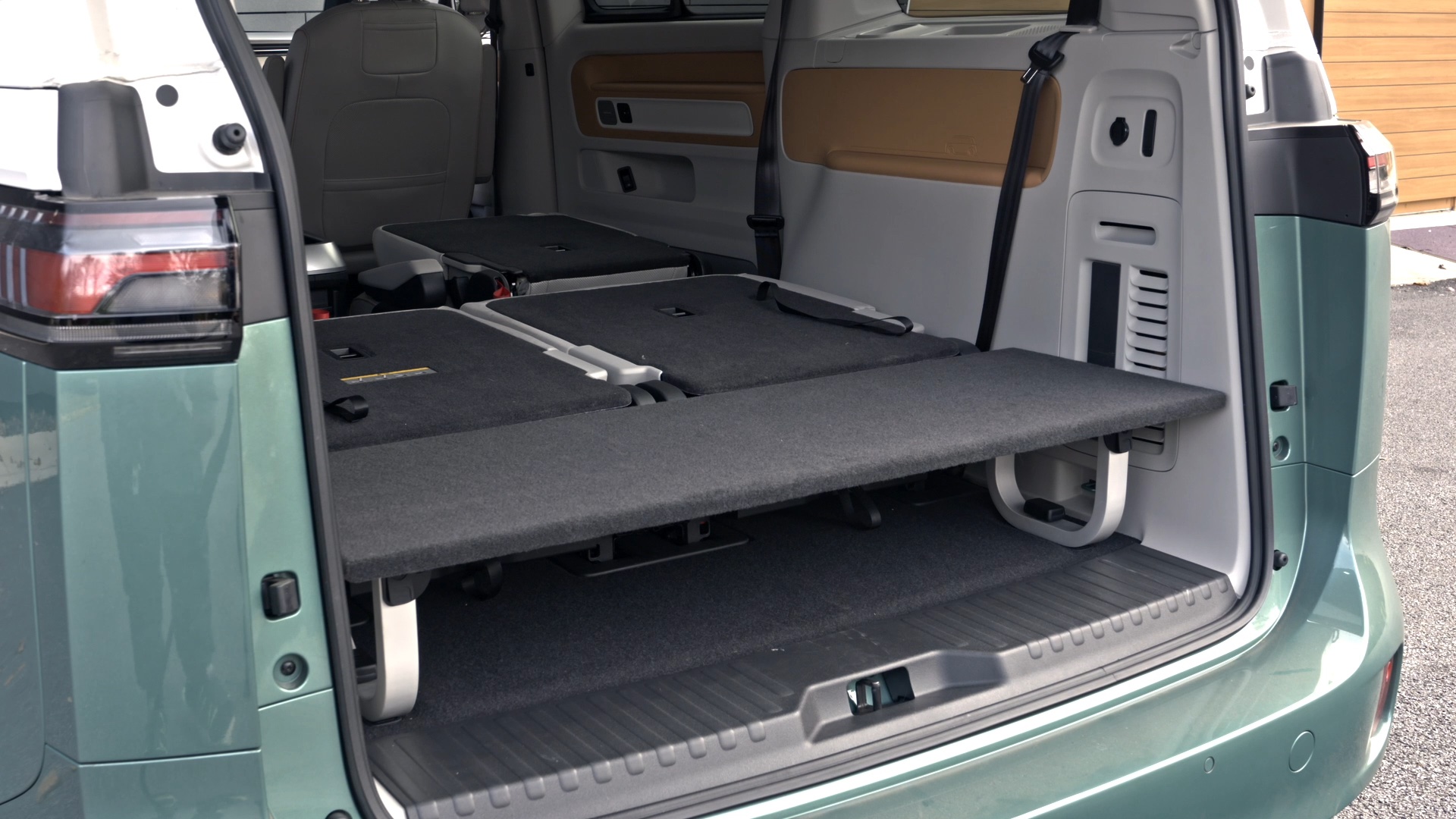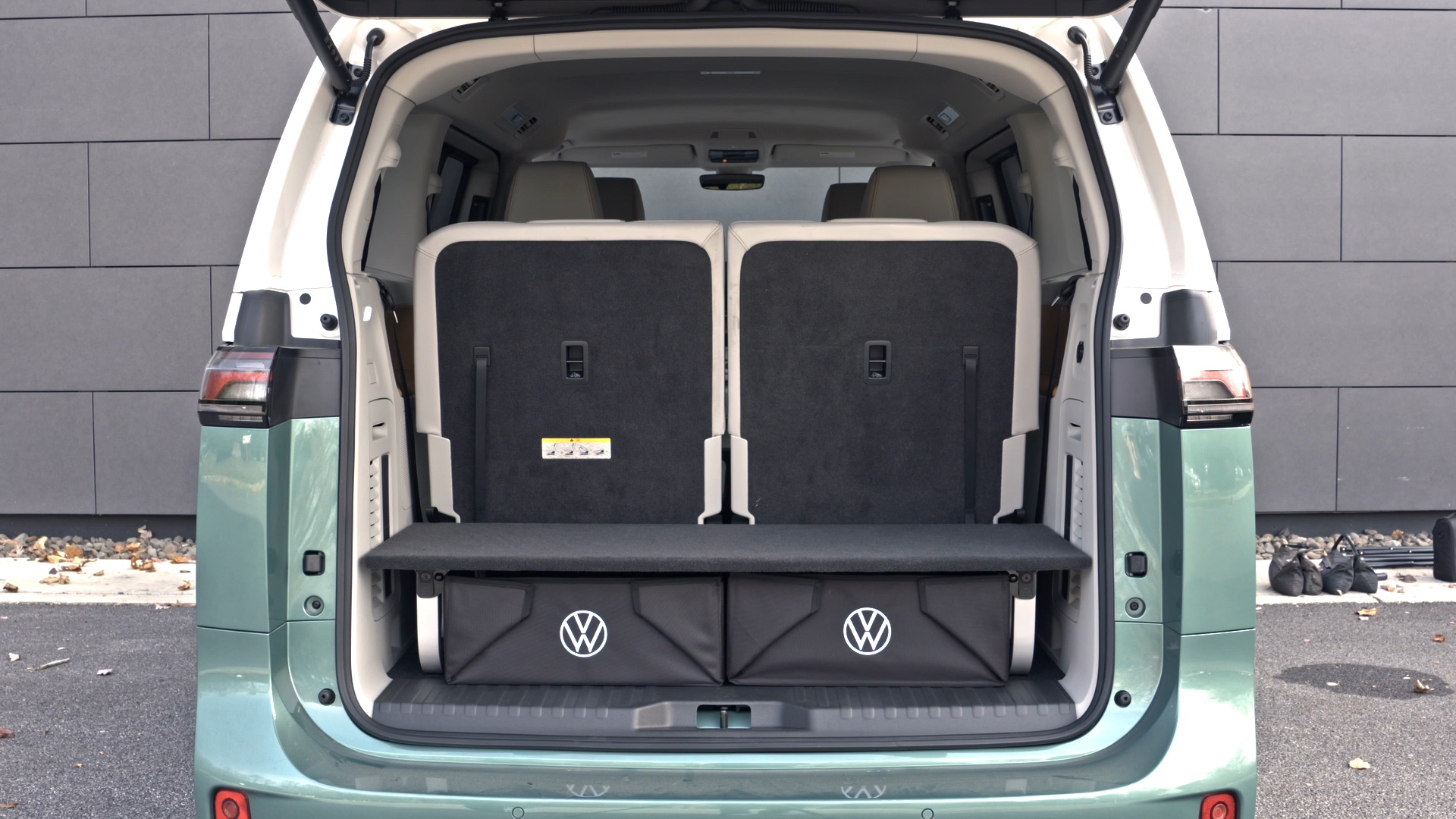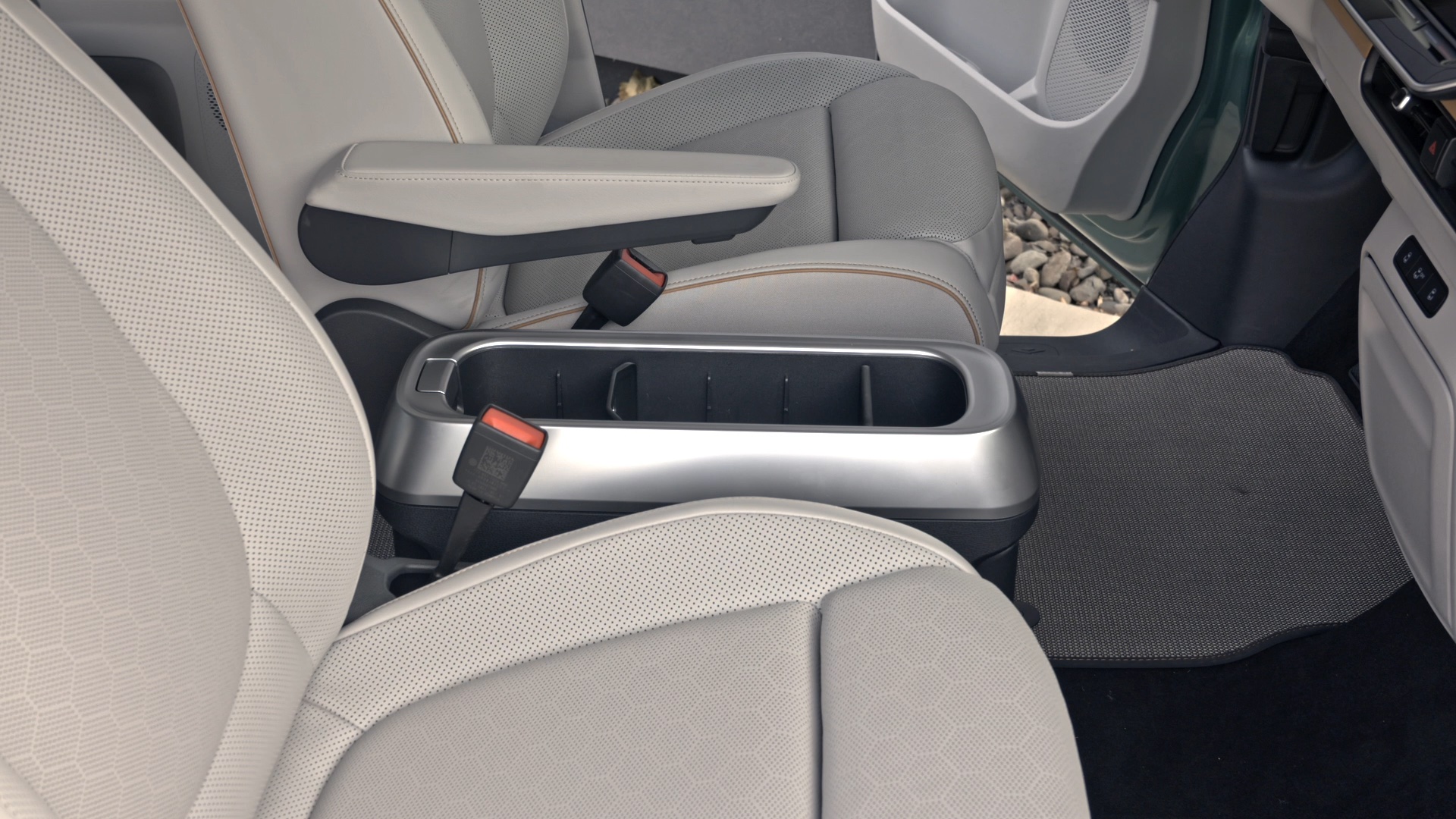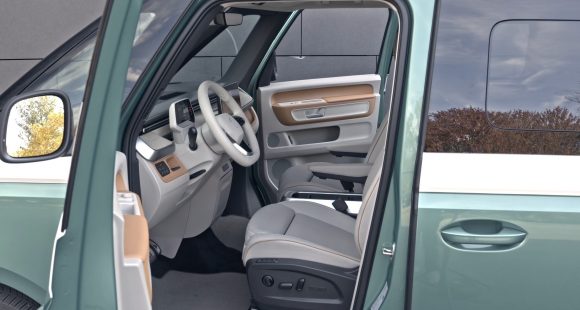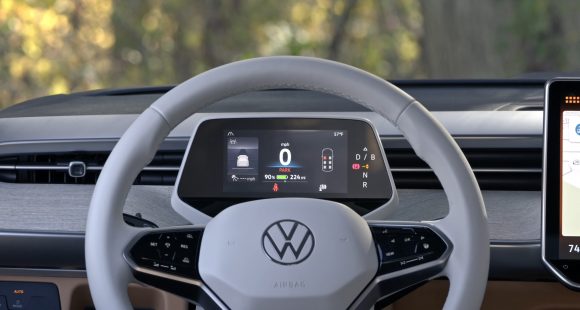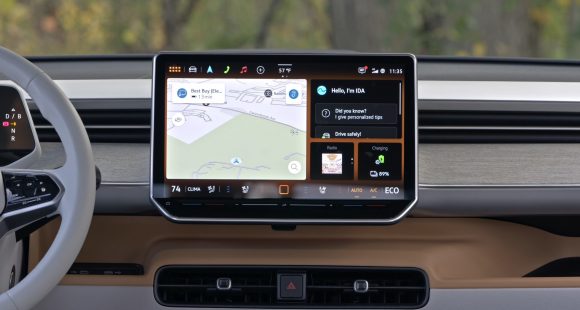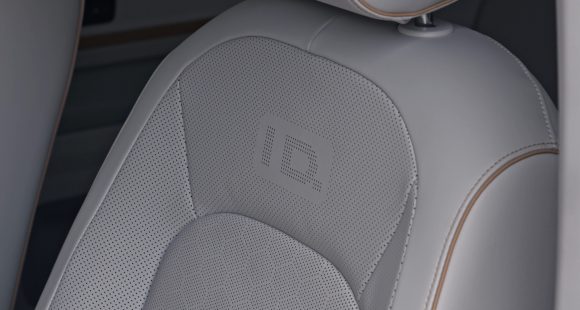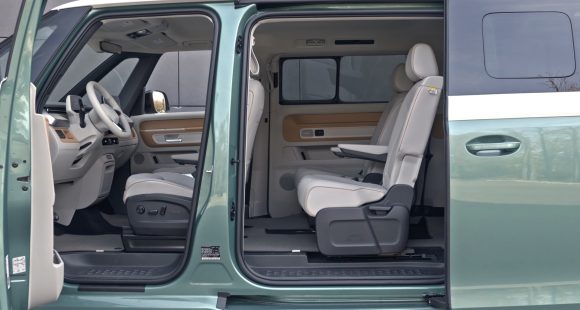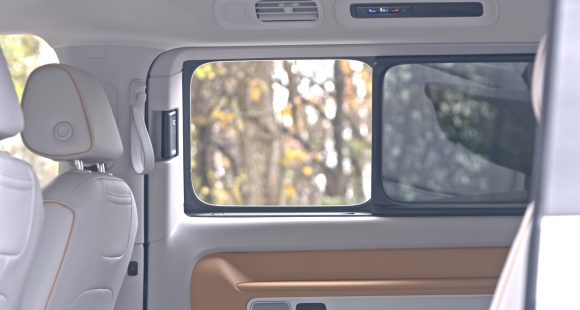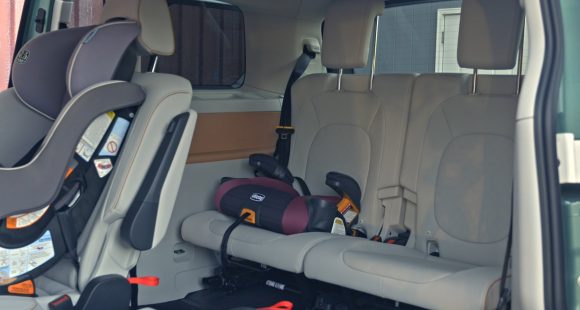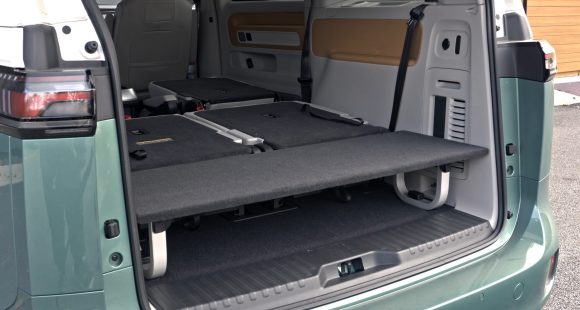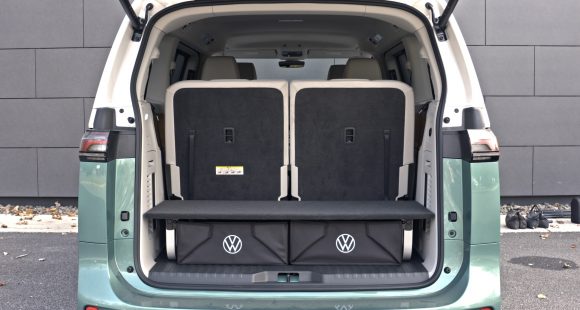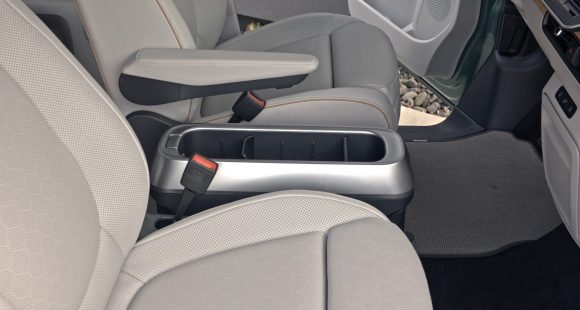2010 Land Rover LR4
While Range Rovers fit for royalty are the most prestigious products from Britain’s Land Rover, it is their rugged mid-size utilities that are most likely to be found in American driveways. Now to keep that loyalty, Land Rover routinely provides major upgrades. The stepped roof Discovery gave way to a more rectangular LR3 for 2005, and now five years in, designers deemed it time for a new engine, new technology, new interior, and a new name. The Land Rover LR4. Let’s see if all this change is a positive move.
You may not notice much of a difference between the 2010 Land Rover LR4 and its predecessor. It retains the LR3’s squared-off, stepped profile, as well as general size. New styling cues are subtle, like a more upscale front end, smoothed out and brought closer to the top drawer Range Rover. Lighting gains the latest fashion, strips of LEDs daytime running lamps.
The LR3’s lone fender port gets a twin on the LR4. The only place the outgoing model’s asymmetrical styling theme continues is the funky notch in the tailgate glass. Our Izmir Blue LR4 came shod with the new 19-by-8-inch alloy wheels. Twenty-inchers are optional.
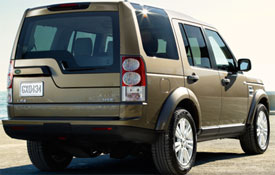 But there are bigger changes under the skin. Open the hood to a new all-aluminum 5.0-liter V8 rated at 375 horsepower and 375 pound feet of torque. That’s 25% more horses and 19% more torque than last year’s 4.4 V8.
But there are bigger changes under the skin. Open the hood to a new all-aluminum 5.0-liter V8 rated at 375 horsepower and 375 pound feet of torque. That’s 25% more horses and 19% more torque than last year’s 4.4 V8.
The only transmission is an upgraded ZF six-speed automatic with sport manual mode. We found it to be well-matched to the Rover’s added power. Shifts are smooth and satisfying.
Off-roading is at the core of Land Rover DNA, and the LR4 is the most intrepid vehicle in the Land Rover’s U.S. model range. Revisions to the sophisticated Terrain Response System provide a higher degree of versatility. Sand Launch Control is new, and Rock Crawl can now automatically apply the brakes in precarious low-speed situations.
Our biggest complaints with the LR3 were slow shifts and a lack of power at the top end, but the LR4’s V8 is smooth and torquey across its entire powerband. Zero to 60 is a fine 7.5 seconds, a half better than our last LR3. So, there is ample passing power for broken lines and yellow lights, and plenty of low-end grunt for steep grades.
The LR4’s other notable mechanical bits include a multi-setting electronic air suspension, new chassis components, and bigger brakes. Towing tops out at a capable 7,700 pounds. Our tester’s Heavy Duty Package includes a locking rear diff for when things aren’t going right, and a full-size spare.
We liked the view from the LR3’s airy cabin just fine, but the dash left quite a bit to be desired. For 2010, the center stack and console feature more ergonomically correct controls, and much more pleasant styling.
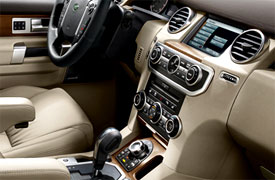 Soft-touch materials are everywhere, from the dash pad, to the stitched multi-function steering wheel, to the leather-rimmed seats. Bolder seat contours make for a more comfortable cabin, too. Gauges remain large and clear, under a deep hood to protect from glare. Our HSE Plus adds satellite navigation, along with three-row, seven-passenger seating.
Soft-touch materials are everywhere, from the dash pad, to the stitched multi-function steering wheel, to the leather-rimmed seats. Bolder seat contours make for a more comfortable cabin, too. Gauges remain large and clear, under a deep hood to protect from glare. Our HSE Plus adds satellite navigation, along with three-row, seven-passenger seating.
We like the raised position of the second row split bench, although there could be more legroom. The third row, however, is hard to get to and really only suitable for small children.
One of the design features that gives the LR4 such off-road prowess is a short rear overhang. But that also limits luggage space. Open the split hatch for only 9.9 cubic feet behind the third seat. Fold it down for a more respectable 42.1 cubic feet, with a class competitive 90.3 after all seats are down.
Less respectable are Government Fuel Economy ratings of only 12 city and 17 highway on premium gas. The new V8 is just as thirsty as the old one. But, according to Land Rover, tailpipe emissions now meet ULEV2 regulations.
Still, the LR4’s Energy Impact Score is very high, 24.5 barrels of oil consumed annually, and leaves a 13.1-ton Carbon Footprint wherever it goes. Those numbers are the same as the Mercedes-Benz GL550, which doesn’t soften the environmental blow at all.
Yet given all it’s attributes and luxury, the base LR4 well priced at $48,100. That’s over $35 grand less than the GL550. Even the higher featured HSE at $51,750, and top-shelf LUX at $57,665, look good by that measure.
Land Rover’s new 5.0-liter V8 is a much better match for the LR4’s mass, and for 2010, Terrain Response is a good thing made better. That, plus a host of other improvements really do make the LR4 worthy of a new name, despite appearances. The LR4 upholds the Land Rover heritage well, adding more refinement and comfort, without losing any of its off-road moves.
Specifications
- Engine: All-aluminum 5.0-Liter V8
- Horsepower: 375
- Torque: 375 Lb Feet
- 0-60 MPH: 7.5 Seconds
- EPA: 12 MPG City/ 17 MPG Highway
- Energy Impact: 24.5 Barrels Oil/Yr
- CO2 Emissions: 13.1 Tons/Yr
2025 Volkswagen ID. Buzz
Volkswagen Brings Beetlemania Level Of Excitement To Minivan Segment
The duty of upholding Volkswagen’s heritage has most recently been delegated to small legacy car names like Golf and Jetta. But hold on! A much larger, totally modern take on VW’s classic microbus has just buzzed over the horizon— the all-electric ID. Buzz. It’s been at the top of our minds since we first saw the concept back in 2017. Well, it’s finally here, so let’s get our groove into drive!
This 2025 Volkswagen ID. Buzz has indeed created the most buzz around Volkswagen since the Beetle’s return to the U.S. in the late 1990s. We couldn’t drive it anywhere without drawing a crowd. No wonder, just about everyone has a VW Microbus story to tell, and seeing this reimagined version rolling down the street brings back all those memories.
VW really pulled it off as far as we’re concerned, as it looks great without appearing over the top. All the cues are here: Big VW logo front and center, lots of greenhouse including A-pillar windows and mini sliders for the second-row passengers, D-pillar air vents, and two-tone wheels. And while its appearance may be pure retro, its drivetrain is far from it, as the ID. Buzz is all-electric, and unlike the new Beetle, the Buzz does retain the original Microbus’ rear-drive architecture.
Powering those rear wheels is a 210-kW motor drawing juice from a 91-kWh battery for a range of 234 miles; 200-kW max charging will get you to 80% in about 26 minutes. Buyers can add another small 80-kW motor up front for 4motion all-wheel-drive and an increase of total output from 282 to 335 horsepower with a combined 512 lb-ft of torque. It uses the same battery, but range estimates drop just slightly to 231 miles. But while those numbers are modest, we also found them to be quite conservative, as we observed as many as 287 miles available in our all-wheel-drive tester’s gauge display and were on pace for 273 miles in our driving loop.
One throwback theme that may be a turnoff to some is that it’s quite a step up into the Buzz’s front seats, but there’s certainly a commanding view of the road once you climb in. Second row seating can be either a three-place bench or a pair of captain’s chairs, so there’s generous room for seven or six passengers. The captain’s chairs in our Pro S Plus offer good support and very easy access to the third row.
Lots of flexibility too with the option to simply fold the seats or remove them altogether.
With the sliding side doors and a wide opening rear hatch, there’s plenty of access for loading big sport utility amounts of cargo. Lots of flexibility too with the option to simply fold the seats or remove them altogether, and the ability to create a full-length flat floor with a rear cargo shelf that covers some handy removable storage bins. There’s 18.6 cubic-feet of space behind the third row, 75.5 behind the second, and a max of 145.5. That’s more than a Chevrolet Tahoe. For smaller items, there are lots of cubbies throughout the cabin, along with a standard Buzz Box that can be moved to multiple locations.
With a design that prioritizes retro form and modern function over aero efficiency, the 4motion equipped ID. Buzz earns a Fair efficiency rating, using 42-kWh of electricity per 100 miles, and we weren’t sure what to expect at our Mason Dixon test track.
What we found was great torque off the line and drama free launches to 60 in just 5.3 seconds. It was very stable at speed and power delivery stayed steady most of the way down the track until we reached about 90 mph, when it began to taper off just before we finished the quarter-mile in 14.0 seconds flat at 97 mph.
With 1,200-lbs. of battery weight nestled in its 127.5-inch wheelbase, the Buzz felt planted to the pavement through our handling course. There was quite a bit of body roll to deal with, but surprisingly little understeer. In panic braking runs, pedal response was inconsistent, feeling soft at times, pushing back hard at others; but through it all, results were quite good, stopping from 60 in an average of just 108 feet.
Three interior themes are available, this Dune is the brightest, featuring coastal inspired wood optic dash décor, “gray and clay” leatherette surfaces, and a high-mounted central 12.9-inch touchscreen. Pricing starts with a rear-wheel-drive Pro S at $61,545; this Pro S Plus begins at $65,045, add another $4,500 for 4motion, which brings a few extra features along with all-wheel drive.
Retro design with old-school VW charm, modern EV drivetrain, big SUV capacity merged with minivan flexibility; it all comes together in this 2025 Volkswagen ID. Buzz. It’s easily one of the coolest rides of the year and one that will likely keep Volkswagen dealers buzzing for years to come, and that’s something no other people and things mover can say.
Specifications
As Tested
- Motor Setup: Dual-Motor AWD
- Battery Size: 91-kWh
- Horsepower: 335
- Torque: 512 lb-ft
- EPA Range: 231 miles
- 0-60 mph: 5.3 seconds
- 1/4 Mile: 14.0 seconds at 97 mph
- Braking, 60-0: 108 feet
- MW Test Loop: ~ 273 miles







